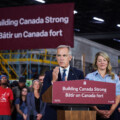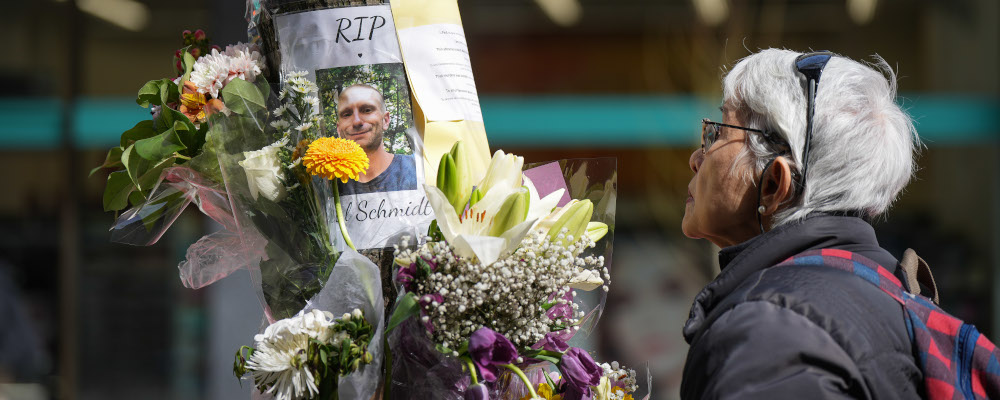Last month on a Sunday afternoon in Vancouver’s city centre a man was stabbed to death outside Starbucks in front of his partner and three-year-old child. In America, this might have been a shooting, and it might not have made the news, but in Canada, crimes like this still generate shock.
As more details emerge about this case, it is likely to give local residents renewed concern that Vancouver has a developing violent crime problem, and the source is not much of a mystery.
The corner of Granville Street and West Pender where the attack occurred is steps from the city’s main shopping mall. The area is always full of shoppers, SFU students, and local office workers, and the Starbucks was recently renovated to become a flagship “Reserve” store.
However, it is only a few hundred metres from the city’s Downtown East Side, which is notorious for its encampments, stolen property, open drug markets, and lack of policing. This zone—neighbourhood being the wrong word to describe a geography where people sleep on the sidewalk and have no ownership—has been a hub for drug users and the crime they attract and generate for decades.
Its boundaries used to be clearly delineated, comprising about five square blocks north of Chinatown and east of the Gastown district on East Hastings and Main. Residents and clued-up tourists have learned to avoid going to this area even in daytime, and until recently, Vancouver’s voters and their elected representatives tolerated the degradation because it seemed contained, if not quite out of sight.
Now the problems of the Downtown East Side are becoming too hard for Vancouver residents to ignore. Aggressive begging outside subway stations. Drug paraphernalia littering the sidewalk. Homeless drug users smoking crack pipes at lunchtime outside Microsoft’s new head office.The NPA swept the board in last year’s municipal elections in Vancouver largely on the back of public concern about crime and the surge in property thefts impacting neighbourhoods further out like Kitsilano and Kerrisdale.
The truth that no one seems willing to articulate here is that the Downtown East Side was a social experiment driven by an unaccountable collection of publicly funded harm reduction advocates and their academic outriders that has become nothing short of a national disgrace.
It would be hard to imagine any European city allowing such entrenched poverty, despair, and lawlessness to develop just a few blocks from an international tourist hub. However, this urban health disaster zone is the symptom of a broader policy failure that needs to be called out.
Drug addiction is a wicked social problem that blights many North American cities—but it is not a new one. Canada’s current opioid addiction crisis has been unfolding for more than two decades and Vancouver is the epicentre.
Way back in 2000, the City of Vancouver published its “four-pillar” strategy to address drug addiction which was then killing hundreds of people every year in the province. This marked the official turn towards “harm reduction” as the guiding philosophy. But deaths kept increasing and by 2016, there were 994 drug toxicity deaths in British Columbia, leading to the unprecedented declaration of a public health emergency.
Extra resources were pledged, and existing policies like supervised consumption sites, needle exchanges, and other “harm reduction” approaches reinforced. Fast forward five years and deaths had more than doubled again, to 2,306. Last year’s total saw only a modest decline.
For all that time, British Columbia has claimed to be the province offering real policy leadership on drugs—but the record is abysmal and the excuses are running out. In just the last week, the city had its worst ever day of drug overdoses with 45 in one day.
As we show in new research for the Stanford Network on Addiction Policy published this month, the toll in terms of human potential has been catastrophic. In Canada overall, in 2020 and 2021, opioids caused nearly half as many deaths (13,815) as COVID-19 over the same period (29,985) and were responsible for five times the number of lost life years.

In B.C., our research shows that the profile of users who die skews older and more male, with many overdoses affecting men in their late forties and fifties; possibly a sign that B.C. is experiencing an inward migration of drug users attracted to the services there, and also the free supply of potent opioids.
British Columbia now has a death rate twice the national average, and one as high as the worst affected parts of the U.S., the country that Canadians like to think must be doing worse with their aggressive policing, tough sentencing, and lack of health-care access.
If this was any other area of policy, such as educational attainment, or cancer survival rates, this level of deterioration would be cause for a huge reckoning, public petitions, and a major policy rethink. Instead, B.C.’s new premier has been largely silent on the issue, and he has to deal with a media and health-care elite who seem to want to double down on “harm reduction” and dismiss any other approach as retrograde and discriminatory.
Let’s be clear: the harm reduction agenda was sold as a compassionate pivot away from a failed “war on drugs,” but this more progressive approach, while respecting the individual rights of drug users (to live in squalor and to poison themselves), has not cut the death rate and could actually be stoking the drug addiction crisis it claims to be addressing.
If it has mitigated some of the risks of contaminated supply, that seems to have been outweighed by an ongoing influx of illicit and more toxic drugs, pulling in more desperate addicts who can get easy access to diverted product in the laissez-faire climate that B.C. has created.
Now the health-care lobby and harm-reduction ideologues have shifted their focus to “safe supply” —a policy that has no good evidence base. Such a model is short-sighted, as it presupposes that demand can only be channeled to less contaminated products, rather than suppressed, and it is naïve because it is based on the notion that addicted users do not divert their own supply for profit, or use illicit drugs on top of the “safe” supply they can freely access.
Enforcement is meant to protect communities and also to stop addicted users from being exploited by drug dealers and organized crime. In fact, enforcement was one of the Vancouver strategy’s four pillars, but it seems to have all but disappeared. Charge rates in B.C. are down and criminal cases for serious drug crime have dropped by 50 percent across Canada over the last decade.
And the province is now going even further, with decriminalization of drug possession in B.C. now taking the cops even further away from any role in responding to this crisis, other than helping ambulance crews pick up the pieces of the latest overdose or mugging.
As death rates have climbed, the crime and wider social impact of the addiction crisis have started to generate mainstream political attention, with the federal Tories explicitly rejecting “safe supply” as adopted in B.C. and endorsing the Alberta government’s focus on recovery as the system-wide goal of addiction policy.
Most people can see that we are clearly not winning this battle with the tactics adopted to date. And it should not take the senseless random murder of a father in front of his family to start the long overdue debate we need about how to fix Vancouver’s crime and drug problem.
Sadly it won’t happen unless politicians and the media are brave enough to question the disastrous status quo they have been told to bless as progressive for two decades. This cocktail of west coast libertarianism and Dutch-style social welfarism turns out to be potent. But as Professor Keith Humphreys has said, “It can’t be compassionate if it doesn’t work.”
Recommended for You

Mark Carney’s Ottawa wants to plan prosperity. Alberta would rather create it

Alberta already tried Carney-style budgeting—it backfired

‘We have this incredible gift’: Why Canadian LNG is a ‘multi-billion dollar’ resource and key to global security

There are no minor projects, prime minister



